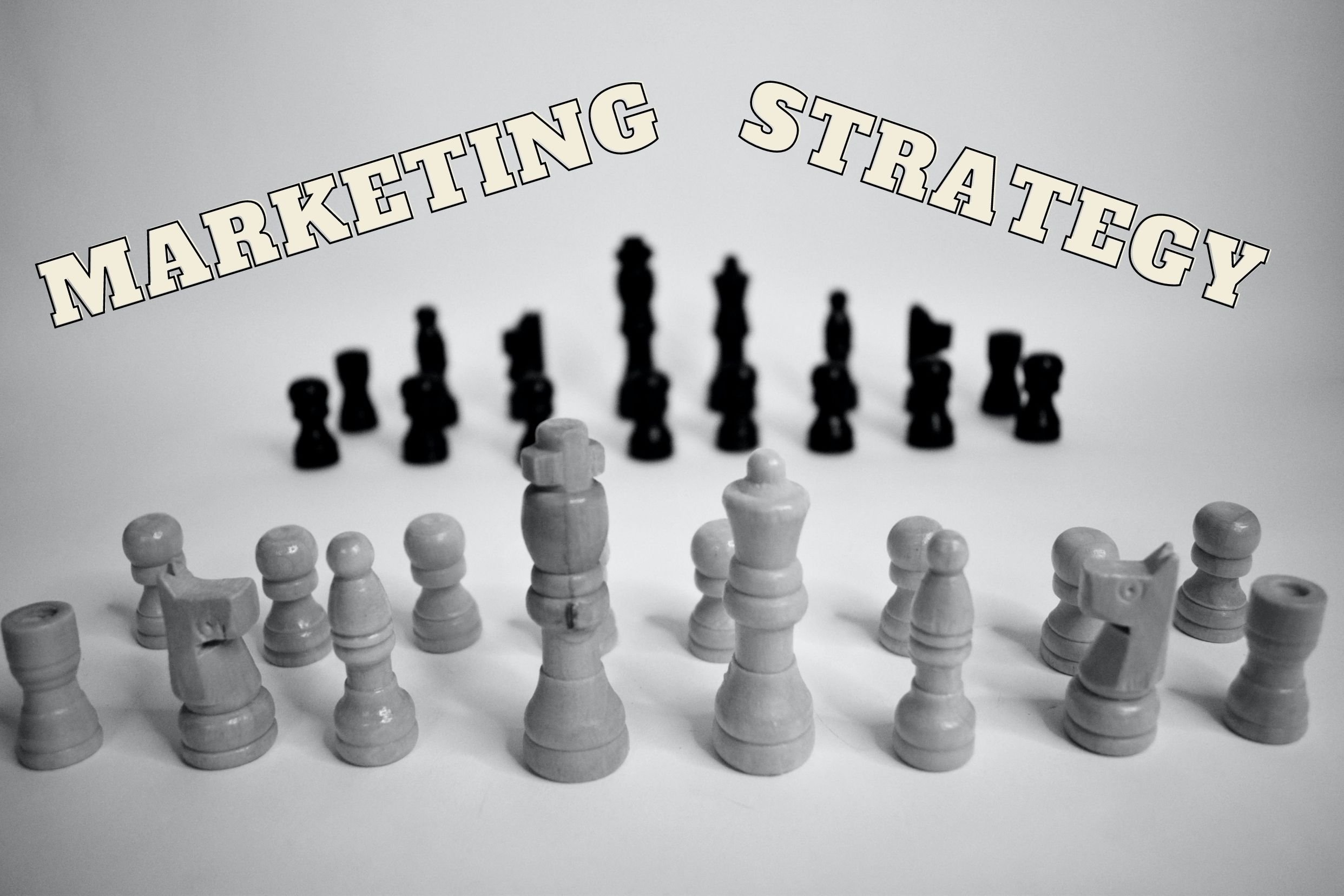How Long Will A Marketing Strategy Take To Work?
by Leanne Mordue on 11-Jun-2021 09:00:00

Businesses invest in marketing and sales in order to see a return, and it is reasonable to ask how long it is likely to be before you start seeing your investment deliver new paying customers and a positive bank balance.
A lot of marketing agencies will point to indicators such as increased web traffic, more enquiries, and a higher search rank as signs of success – and these things are definitely important metrics to track, upwards signs in these areas mean that you are on your way to positive ROI.
How long, then, should you expect to wait before seeing concrete results from various marketing activities?
In our experience, it takes customers 6 to 12 months to start seeing a positive ROI from a marketing strategy, after which the returns keep increasing. As the average B2B sales cycle is around six months, we advise customers not to expect drastic financial indicators before this time, although there are, of course, exceptions to the rule. Businesses with a shorter sales cycle may see quicker results from marketing, as are those that sell a lower value product or service. Companies with a long sales cycle or a high-value product may need to wait longer before they see tangible results from marketing.
This isn’t what many businesses want to hear and, therefore, it isn’t what a lot of digital marketing agencies will tell you. Digital marketing agencies have a tendency to measure ROI too quickly, due to internal pressures and the perceived expectations of customers, with many appearing to promise an ROI within months 1 to 3.
Agencies that do this are often measuring short-term campaign goals, such as improved click through rates, cost per click, brand lift and social media impact (numbers of followers, shares etc.), rather than financial ROI.
Measuring the short term and long term results of marketing
So, to avoid confusion, let’s be clear about KPIs and ROI from your marketing strategy. When you invest in a marketing strategy – i.e. a managed, personalised approach incorporating various digital marketing tactics, and combined with rigorous monitoring, analysis, and feedback – you will see results from month one. These achievements are often strong indicators of a good mid-to long-term ROI.
Marketing Key Performance Indicators (KPIs) months 1 to 6+
Defining personalised KPIs and campaign objectives is one of the most important aspects of setting up a marketing strategy. These goals are bespoke to your business, and should track a measurable uplift in engagement in each of the initial stages of the buyer journey, from Awareness, to Consideration, to Conversion.
These KPIs may include:
- Overall brand sentiment – including lifts in favourability, consideration, and association
- Social media engagement and followers
- Website traffic
- Behaviour of website visitors, including time spent on various pages, number of page views, and bounce rate
- Email marketing open rate and click through rate
- Total number of leads
- Website visitor to enquiries conversion rate
- Lead quality score
- Off-site conversions – e.g. through social media or word of mouth
- Cost per click and cost per lead
Marketing return on investment (ROI) months 6 to 12+ (depending on sales cycle length)
Your ROI, strictly determined, indicates the results of your marketing efforts in terms of total revenues from marketing, cost savings, productivity improvements (e.g. increased win rate from your sales team), number of sales, and lifetime customer value. Financial metrics that contribute to ROI include:
- New sales directly attributed to marketing efforts
- Average value of each sale
- Cost per sale
- Sales win rate
- Approximate market share
- Measurable return on advertising spend (e,g, Google Ads, Facebook Ads)
Both KPIs and ROI have their place when measuring results from marketing. How quickly you see results depends on several factors, many of which are unique to your business. When you discuss your sales targets and individual situation with our digital marketing team, we can help formulate a realistic ROI for various points of your marketing campaign, based on an understanding of your sales cycle and the purchase habits of your target market, as well as external economic conditions beyond your control.
Quick wins and sustainable growth
Some businesses turn to digital marketing in response to losing a large contract and are keen to see results quickly, and in these cases there are some strategies, such as PPC advertising, that are designed to deliver a short-term uplift in revenues. However, the best way to approach marketing is as a long-term strategy, in which you sustainably improve your win rate and market share, and lower your cost per acquisition so that your profit margins are quantifiably higher.
Next steps
To discuss your circumstances in person with one of our inbound marketing specialists, please feel free to give us a call today.
- Inbound Marketing (SEO, PPC, Social Media, Video) (824)
- Strategy (363)
- Sales & CRM (195)
- Marketing Automation & Email Marketing (190)
- Business Growth (164)
- Website Design (160)
- Hubspot (138)
- Lead Generation (115)
- Google Adwords (98)
- Content Marketing (94)
- Conversion (48)
- Case Studies (47)
- News (47)
- Ecommerce (39)
- Webinars (34)
- SEO (24)
- AI (20)
- Events (19)
- Video (17)
- LinkedIn Advertising (15)
- Video Selling (15)
- Software training (13)
- Niche business marketing (11)
- The Digital Prosperity Podcast (10)
- Facebook Advertising (6)
- HubSpot Case Studies (5)
- December 2025 (10)
- November 2025 (6)
- October 2025 (17)
- September 2025 (16)
- August 2025 (14)
- July 2025 (14)
- June 2025 (5)
- May 2025 (19)
- April 2025 (15)
- March 2025 (13)
- February 2025 (13)
- January 2025 (8)
- December 2024 (2)
- November 2024 (4)
- October 2024 (21)
- September 2024 (4)
- August 2024 (8)
- July 2024 (14)
- June 2024 (16)
- May 2024 (25)
- April 2024 (15)
- March 2024 (18)
- February 2024 (5)
- January 2024 (10)
- December 2023 (6)
- November 2023 (10)
- October 2023 (13)
- September 2023 (12)
- August 2023 (14)
- July 2023 (13)
- June 2023 (14)
- May 2023 (15)
- April 2023 (13)
- March 2023 (14)
- February 2023 (13)
- January 2023 (15)
- December 2022 (13)
- November 2022 (6)
- October 2022 (8)
- September 2022 (22)
- August 2022 (15)
- July 2022 (13)
- June 2022 (16)
- May 2022 (14)
- April 2022 (16)
- March 2022 (17)
- February 2022 (11)
- January 2022 (8)
- December 2021 (6)
- November 2021 (7)
- October 2021 (11)
- September 2021 (10)
- August 2021 (7)
- July 2021 (7)
- June 2021 (4)
- May 2021 (4)
- April 2021 (1)
- March 2021 (3)
- February 2021 (5)
- January 2021 (4)
- December 2020 (7)
- November 2020 (6)
- October 2020 (5)
- September 2020 (9)
- August 2020 (18)
- July 2020 (17)
- June 2020 (17)
- May 2020 (10)
- April 2020 (21)
- March 2020 (24)
- February 2020 (21)
- January 2020 (12)
- December 2019 (23)
- November 2019 (12)
- October 2019 (14)
- September 2019 (16)
- August 2019 (15)
- July 2019 (13)
- June 2019 (6)
- May 2019 (8)
- April 2019 (4)
- March 2019 (2)
- February 2019 (2)
- January 2019 (2)
- December 2018 (3)
- November 2018 (24)
- September 2018 (11)
- August 2018 (9)
- June 2018 (3)
- May 2018 (6)
- April 2018 (14)
- March 2018 (12)
- February 2018 (16)
- January 2018 (15)
- December 2017 (15)
- November 2017 (18)
- October 2017 (23)
- September 2017 (19)
- August 2017 (28)
- July 2017 (27)
- June 2017 (25)
- May 2017 (18)
- April 2017 (17)
- March 2017 (16)
- February 2017 (17)
- January 2017 (14)
- December 2016 (21)
- November 2016 (27)
- October 2016 (25)
- September 2016 (16)
- August 2016 (20)
- July 2016 (19)
- June 2016 (14)
- May 2016 (20)
- April 2016 (24)
- March 2016 (22)
- February 2016 (28)
- January 2016 (27)
- December 2015 (28)
- November 2015 (19)
- October 2015 (9)
- September 2015 (12)
- August 2015 (5)
- July 2015 (1)
- June 2015 (10)
- May 2015 (3)
- April 2015 (11)
- March 2015 (14)
- February 2015 (15)
- January 2015 (12)
- December 2014 (2)
- November 2014 (23)
- October 2014 (2)
- September 2014 (2)
- August 2014 (2)
- July 2014 (2)
- June 2014 (7)
- May 2014 (14)
- April 2014 (14)
- March 2014 (7)
- February 2014 (2)
- January 2014 (7)
- December 2013 (9)
- November 2013 (14)
- October 2013 (17)
- September 2013 (3)
- August 2013 (6)
- July 2013 (8)
- June 2013 (4)
- May 2013 (3)
- April 2013 (6)
- March 2013 (6)
- February 2013 (7)
- January 2013 (5)
- December 2012 (3)
- November 2012 (2)
- September 2012 (1)
Subscribe by email
You May Also Like
These Related Blogs

Why You Should Invest In Marketing: 5 Ways Marketing Gives Your Business A Return On Investment
Most accountants say you need to invest at least 5% of revenue into marketing, but very few small businesses actually do that.

Vidyard Teams vs Vidyard Free - What You Get With A Paid Vidyard Account
Video is becoming an increasingly important part of modern business - it can play a part in your marketing strategy, sales strategy and customer servi …

What Percentage Of Your Turnover Should You Invest In Marketing?
Investing in digital marketing is a smart decision for any SME serious about sustained business growth, but determining the right budget to invest isn …




